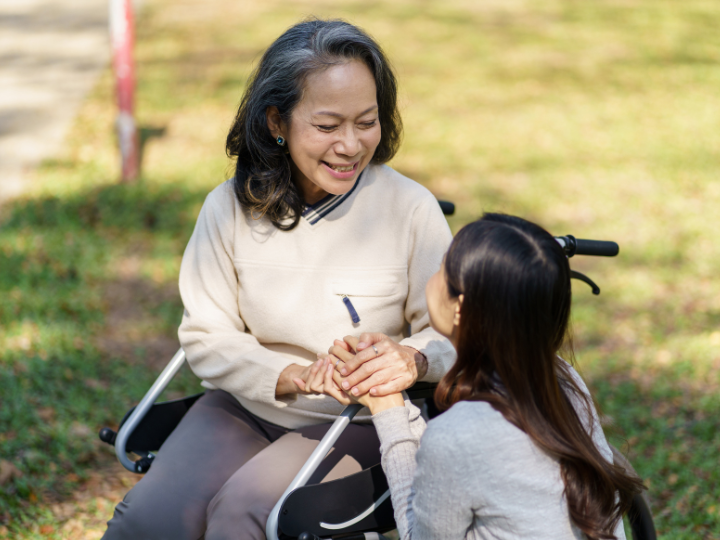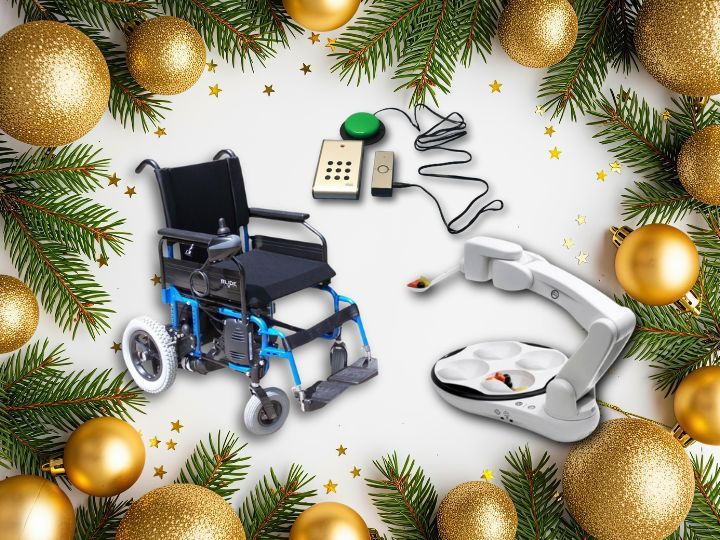While there has been some respite in the ongoing bushfire crisis that’s devastated parts of Australia, we’re highly aware that we’re still in the thick of it. Our thoughts are with our members, their loved ones and MND NSW staff who have been caught up in the fires, as well as the affected families, communities, and the brave firefighters and volunteers who’ve fought to save lives and property. Whilst you’ve probably already decided on your fire plan, and understand the safest thing to do is to leave early, here are a few extra key tips our MND Advisors are passing on to members living in bush fire zones.
Find out more about how to put together a bush fire survival plan.
#1 Staying ready
If you’re in a bushfire zone, you’ve probably been prepping for months. To help you stay ready, NSW has a program to assist people with disabilities and elderly residents to get their homes in order before fires hit.
Funding is available for domestic and hard to do chores like clearing gutters, thinning vegetation around the home, removal of lead litter, bark and branches, trimming of trees and lawn mowing.
#2 Decide on at least two places to go if fire threatens
Talk to your friends, family and/or health care team to identify at least two suitable places you can go if you need to be evacuated. This could include a family member or friend’s house but could also include a hospital or palliative care facility that’s within a reasonable travelling distance.
If you need assistance in looking for accessible accommodation, check out our story on Accessible Accommodation.
#2 Identify critical equipment you may need
Identify critical equipment such as Non-Invasive Ventilation (NIV) that you’ll need to take with you when you evacuate and consider how this needs to be transported. Is this equipment portable or are there portable options? Talk to your Respiratory team if you need to access portable NIV.
Make a list of equipment that you use but which would be difficult to take with you in an emergency evacuation.
If your assistive technology needs replacement or repair but you don’t have funding for this in your plan, you can call (1800 800 110). You will receive a number which should allow you to access emergency repairs and equipment.
If the equipment is for safety, mobility, communication, activities of daily living or was damaged in the fire, the repairs will be considered ‘urgent’. There is also access to short-term equipment loans. If it’s out of office hours, you can read more about the process for out of hours repairs here.
We also recommend compiling a list of hire companies who can supply the same or similar equipment. Email this list to yourself and others so you have a few ways to access the information if you need to evacuate.
#3 Identify medication you will need
Organise your medication so you are able to put it in your evacuation bag at a moment’s notice. Have your prescriptions filled in advance so you don’t run out of medication or make sure to pre-pack any prescriptions you may need.
#4 Confirm you have the transport you need to evacuate
Confirm you have organised the transport you need in order to evacuate. Do you have a wheelchair accessible vehicle or will you need an ambulance?
#5 Contact your local fire brigade
Call and advise your local fire brigade of your situation. If your area is not currently near a fire you could invite them over for a cup of tea to see your home so they can assist in making a plan.
#6 Scan copies of necessary documents
While you may have already organised to scan and email yourself copies of JP authenticated identification and your insurance details, make sure you do the same for referral letters, prescriptions or anything else you may need while living away from home.
#7 Be aware of priority NDIS plan reviews
People affected by the fires can have their enquiries escalated by the NDIA. The NDIA also have the authority to make changes to plans without going through the usual plan review process.
#8 Be mindful of the effects of smoke
Ways to minimise the effects of smoke include
- Not going outside unless you ‘have to’
- If you have access to air conditioning set it to ‘re-circulate’
- Monitor the air quality via state and territory websites including:
New South Wales
Australian Capital Territory
Northern Territory
Queensland
South Australia
Victoria
Tasmania
Western Australia
- If you experience tightness or breathing difficulties call triple zero (000) straight away
#9 Be aware of access to mental health support
The Federal Government has announced new mental health support services available for people affected by the fires including:
- 10 immediate counselling sessions will be offered at recovery centres, Service Australia Centres and local mental health centres in fire affected regions.
- Rebates for 10 psychological therapy sessions (in addition to the 10 already available through Medicare)
#10 Keep key information close by
The NSW Rural Fire Service strongly advises having the following numbers, links and apps easily reachable:
- In an emergency call: 000
- For information on bush fire, call the Bush Fire Information Line: 1800 679 737
- NSW Rural Fire Service Website: https://www.rfs.nsw.gov.au/fire-information/fires-near-me
- Fire Danger Ratings: https://www.rfs.nsw.gov.au/plan-and-prepare/fire-danger-ratings ‘Fires Near Me’ free smartphone app.
- Check out the frequency of the nearest ABC Radio station http://reception.abc.net.au/
To everyone affected by bushfires, we send our love, thoughts and prayers to all at this time. Stay safe.




